McDonagh has missed the last two games after suffering a shoulder injury last Tuesday in Vancouver. He is expected to return for the final couple of games, but there is no word if he will be back in the lineup tonight vs. Carolina.

McDonagh has missed the last two games after suffering a shoulder injury last Tuesday in Vancouver. He is expected to return for the final couple of games, but there is no word if he will be back in the lineup tonight vs. Carolina.

Boys has missed the last three games with back spams, but should be back in tonight vs. the Flyers. He was reunited with Nick Bjugstad and Sean Bergenheim on the Panthers top line in the morning skate, so all signs point towards him returning this evening. Boyes has tallied 20 goals and 14 assists (34 points) in 75 games this season.
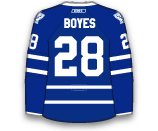
Huberdeau, who has missed he last 11 games with a concussion, is on the ice for the Panthers' morning skate taking part in regular work on a line with Drew Shore and Jesse Winchester. It has been a tough season for Huby, but he will look to get something going at the end of the season that he can build off of in 2014-15.

Kostka has missed the last two games after suffering a concussion last Tuesday vs. Montreal. He was hit in the head with a Douglas Murray elbow, the play earned Murray a three-game suspension. The Lightning have a ton of depth on the blue-line, so they will be patient with Kostka's recovery. He as averaged 15:43 TOI and has two goals, three assists with a plus-5 rating in 16 games since being acquired by the Lightning.

Horton was listed as a game-time decision on Monday, but based on the morning skate it looks like he will be back in tonight vs. the Coyotes. Horton is skating on a line with Ryan Johansen and Boone Jenner--monitor his status following the a.m skate.
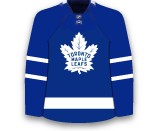
Stewart has missed the last 16 games, but should return tonight vs. Detroit. Originally he was expected to miss the rest of the regular season, but it looks like he will be available to suit up for the final few contests.
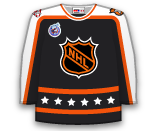
Ehrhoff took a puck to the ear on Sunday which required 40 stitches following the game. It was a pretty gruesome gash that Ehrhoff elected to share on Twitter, but depending on how well it has healed, he could be held out of tonight's game vs. the Red Wings. Mark Pysyk has been recalled and will play if Ehrhoff can't go.
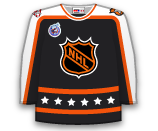
Originally, Foligno's knee injury was believed to be a structural injury, but turned out to be more of a bone bruise. He missed the last two games, but will be in the lineup vs. the Wings tomorrow. He has seven goals and 10 assists (17 points) in 70 games.

Smith has been out since March 24th after suffering a knee injury that night in New York. He has been skating over the last week, but this morning was his first full practice since getting hurt. The Coyotes are in a tough fight for the last Wild Card spot in the West, so getting Smith back would be a huge boost for the team. They have four games remaining, starting tomorrow vs. Columbus. There is no word if Smith will be ready, but he is definitely nearing a return. Monitor his status in the morning skate tomorrow.
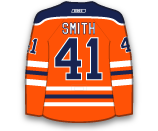
Jones had missed the previous five games with a concussion he suffered on March 23rd in Chicago. The Predators season is coming to a close, which means the end of Jones' rookie season. As of now, he has six goals and 18 asssits in 73 games. His 24 points has him tied for 21st amongst rookies in scoring.

Andersen was shaken up in Friday's loss to the Predators. He was struck high by a puck and did not return for the third period. With Andersen sidelined and Jonas Hiller struggling, John Gibson will make his NHL debut on Monday. Regardless of the outcome, expect Gibson to be sent back to the AHL when Andersen is 100 per cent.

Sekera will miss his third straight game with a lower-body injury. Sekera has blown-away his previous career highs in his first season with the Hurricanes. He has 11 goals and 33 assists (44 points) in 47 games. His previous high was 29 points. He is listed as day-to-day.
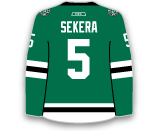
Steen has missed the last three games and will probably miss Tuesday's game as well. Monitor his status during tomorrow's morning skate.
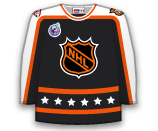
Fowler is not expected to be back in the lineup tonight in Vancouver, but after missing the last 11 games, he should return either Wednesday or Saturday.

Ruhwedel was injured after being hit high by Flyers' forward Zac Rinaldo on Sunday. Rinaldo will likely be suspended as a result of the illegal hit to the head.

Lieuwen's concussion means the Sabres will need to find another goaltender to back-up Matt Hackett on Tuesday. Lieuwen joins Jhonas Enroth and Michal Neuvirth as injured Sabres' goaltenders.
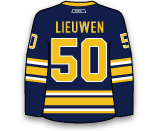
Umberger has recently been serving as a healthy scratch, so this is not that big of a loss to the Blue Jackets playoff push. WIth Umberger out expect Matt Frattin and Corey Tropp to battle it out for playing time.

Lupul's recovery time is expected to be three weeks and with the Maple Leafs' playoff chances shrinking with every passing game, don't expect to see Lupul again until October of 2014.
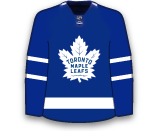
Doughty missed Saturday's game with an upper-body injury, but could be back in the lineup on Wednesday. He is listed as day-to-day, and he could be held out on Wednesday to rest prior to the post-season.

There is no word on what is ailing Ladd, but it could keep him out for the final three games of the season. The Jets will be in tough tonight without Ladd or Dustin Byfuglien.
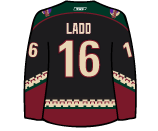
The NHL injury report is updated daily so that you can see the latest injury news ahead of puck drop in any of today’s matchups. Seeing timely updates to the NHL injury report can make a major impact on your daily fantasy sports picks and wagers on a particular game. All information provided on the NHL injury report is provided directly by the NHL and each respective franchise to ensure accuracy.
While the minimum amount of time spent on the injured reserve list is seven calendar days, there is no maximum amount of time that a player can be placed on the injured reserve list. If a player is set to be sidelined for longer than 24 calendar days or 10 NHL games, then a club may opt to place them on the long-term injured reserve instead. This allows franchises with the ability to exceed the salary cap while a player is placed on this reserve list.
No injury recovery timeline is the same as another as there are several factors that go into the rehab process for a player being affected by injury. Factors include but are not limited to, injury severity, player injury/medical history, age, as well as the location of the injury. Some injuries are able to clear up in a matter of days, while others may take an athlete out of action for the entirety of a season.